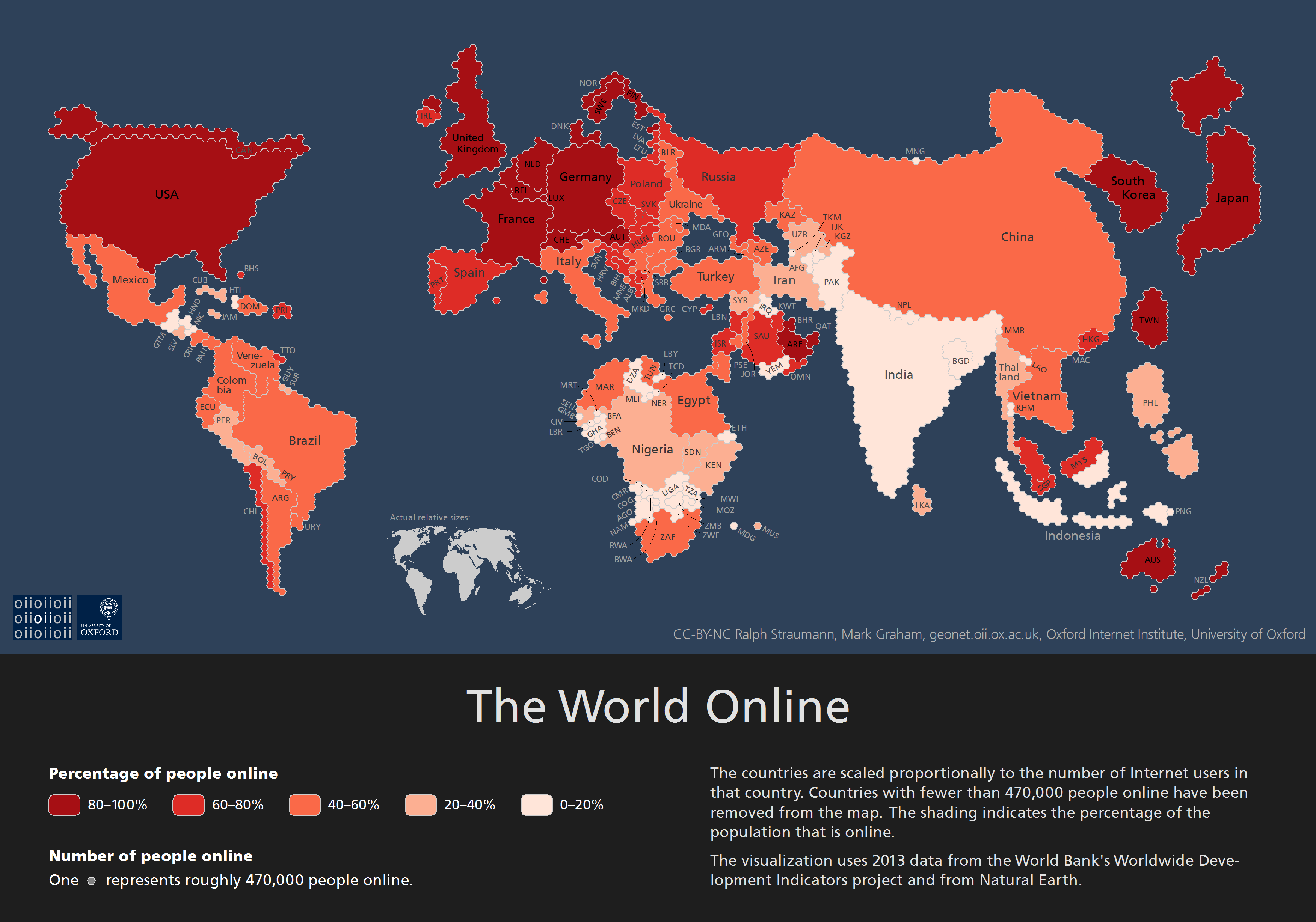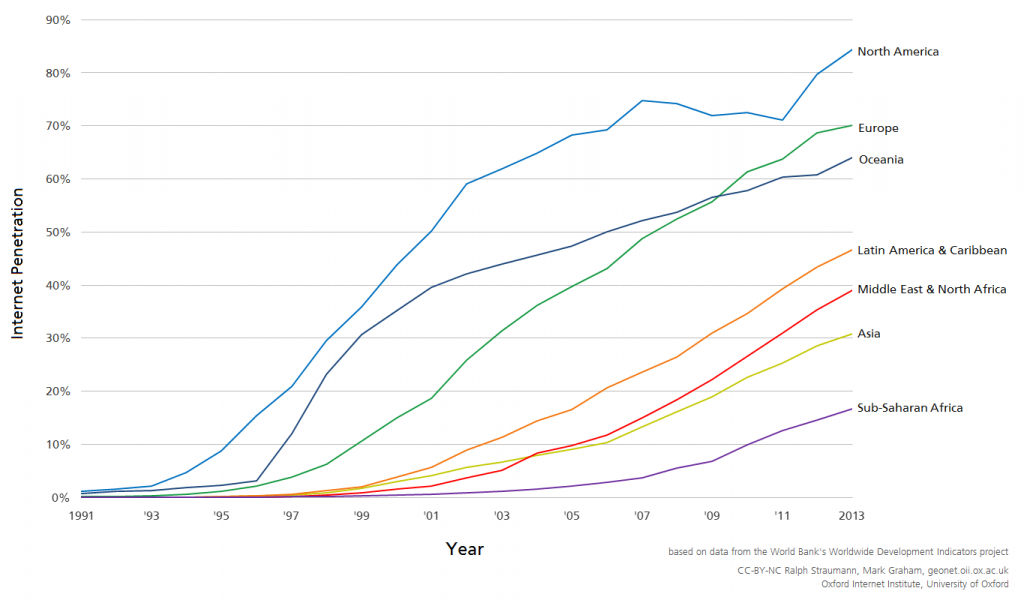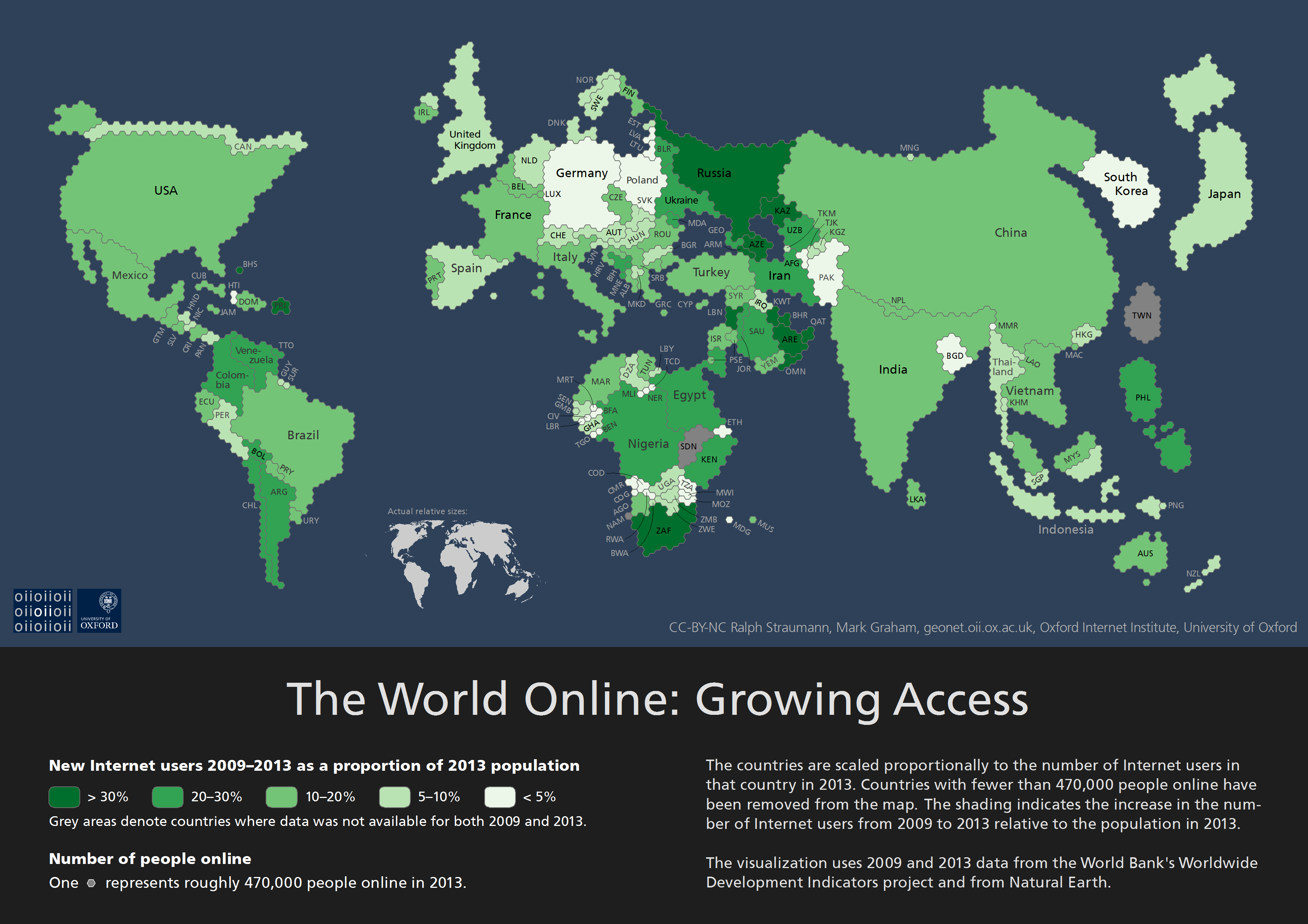The Importance of Being Connected
The Internet is ever more important to contemporary economic, social, and political activity. Thus, it is important to map who and where is (and isn’t) connected and can (or cannot) participate.

Internet Population cartogram (click for larger version)
Changing Internet Penetration by World Region
In our last post, we primarily discussed how the number of people with Internet access has changed. Using the same data compiled in the World Bank’s Development Indicators, we can also examine how Internet penetration (i.e., the share of a region’s population who has access to the Internet) is distributed and has changed over time. [1]

Proportion of Internet users in the population per world region, 1991–2013 (click for larger version)
First, as seen previously, Asia is experiencing a sustained surge in rising Internet population. But looking at the development of Internet penetration in the above graph, it becomes clear that Asia’s trajectory is still far from rates of access in North America, Europe or Oceania. Put differently: While Asia is already home to 46% of the world’s Internet users, that number still has potential to significantly increase.
Second, Internet penetration in Sub-Saharan Africa is the lowest amongst all regions, but has also increased significantly after 2009. Yet the rate of increase in Sub-Saharan African Internet penetration does largely not yet match that of regions with already better online access.
Third, there are a few very populous countries which still have low rates of Internet users according to the World Bank, e.g. India (15% Internet users among 1.3 billion inhabitants), China (46% of 1.4 billion), and Brazil (52% of 200 million). If India merely achieves the global mean Internet penetration rate of 38%, this would offer another 290 million people accessing the Internet. If India, China, and Brazil joined the countries in the top fourth (quartile) of Internet penetration (>73% people with Internet access), 1.1 billion additional people would gain Internet access, thus growing the current global Internet population by a staggering 44%.
Growing Access?
We can also map the changing number of people with Internet access. To that end, we compute the number of new Internet users between 2009 and 2013 per country. We then map this number as a proportion of the country’s population in 2013 (of course, the population sizes also change slightly between 2009 and 2013).
This way, we can identify countries which brought a relatively big proportion of their inhabitants online between 2009 and 2013: Russia, Kazakhstan, Azerbaijan, Lebanon, Kuwait, Bahrain, Qatar, the United Arab Emirates, Oman, South Africa, Puerto Rico, and the Bahamas. In other words, over 30% of the population of those countries are relatively new internet users. Because of their recent growth in Internet users, most of these territories find themselves in the intermediate (or better) class of Internet penetration in 2013 (near the top of this blog post).
Most of the world’s already-well connected countries are relatively pale in the above visualization, because most of their population is already online. But, we also find that most countries with lowest Internet penetration (< 20%) are in this situation, because the dynamic over the last few years has truly been a very flat one (with less than 5% growth). This applies for example to Afghanistan, Pakistan, Bangladesh, Mali, Niger, Chad, Ethiopia, Tanzania, Malawi, Mozambique, Rwanda, both Congos, and Haiti. And it likely means these countries’ Internet populations might not grow significantly in the short term, unless there is a meaningful shift in the push and pull factors behind local internet access.
[1] As the World Bank does not report data for Australia 2002–2004, we chose to linearly interpolate the missing data.
